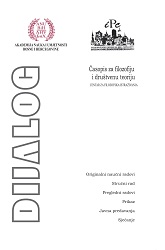Ekonomska i finansijska efikasnost zemalja bivše SFRJ: 1995–2020.
Economic and financial efficiency of the countries of the former SFRY: 1995–2020.
Author(s): Fikret ČauševićSubject(s): National Economy, Economic history, Economic policy, International relations/trade, Economic development, Transformation Period (1990 - 2010)
Published by: Akademija Nauka i Umjetnosti Bosne i Hercegovine
Keywords: former Yugoslav countries; economic growth; international investment position; net international investment position;
Summary/Abstract: The starting positions of economic transition of the former Yugoslav countries were quite different, in the first place as a consequence of the wars in this part of Europe, and especially of the war for independence of internationally recognized Bosnia and Herzegovina as a sovereign state in May of 1992. The war-related human and physical capital losses of Bosnia and Herzegovina had been much higher compared with the other former Yugoslav countries. The human capital loss of Bosnia and Herzegovina measured by the number of killed people was, according to the official data available for all former Yugoslav countries, five times greater than a combined human capital loss in all other former Yugoslav countries. The physical capital loss and GDP lost during the 1992-95 war in Bosnia and Herzegovina were three times greater than the combined physical capital loss and GDP lost in all other members of the former Yugoslavia. Taking the two-factor model of economic growth as the basis for the analysis of starting positions of countries in transition, no single country in transition had such a bad starting position as Bosnia and Herzegovina. Despite such highly unfavorable starting conditions for transition, coupled with a very unstable and complex institutional and administrative structure created by the Dayton Peace Agreement, the economic results of the Bosnian economy compared with the other former Yugoslav countries, and especially with the group of Western Balkan countries, have been significantly better as measured by the increase in output and exports against the increase in financial resources imported in those economies. More precisely, the available data published by the International Monetary Fund on the net international investment position (net import of capital) for the IMF member countries, data on public debt, and economic complexity, as measured by the Observatory of Economic Complexity, for the first two decades of this century clearly shaw that Montenegro and Serbia have been the worst performers when it comes to financial efficiency. At the end of 2020, the accumulated net import of capital relative to GDP was 197% in Montenegro, and 97% in Serbia. According to the data, those two economies have not only been the worst performers in the Balkans but at the same time, they have belonged to the group of 15 biggest net importers of capital and 15 financially least efficient economies in the world. In the group of former Yugoslav countries, the smallest net imports of capital in percent of GDP have been registered in Slovenia (16.3%) and Bosnia and Herzegovina (38%), followed by Croatia (55%) and North Macedonia (70%).
Journal: Dijalog - Časopis za filozofiju i društvenu teoriju
- Issue Year: 2022
- Issue No: 01+02
- Page Range: 66-88
- Page Count: 23
- Language: Bosnian

